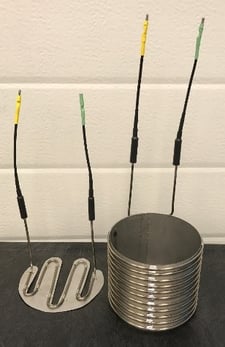High Pressure VSP2 Calorimetry – A Unique Technique to Get Needed Data
By Mr. Gabe Wood, Fauske & Associates
The versatile Vent Sizing Package 2 (VSP2) was originally developed as the DIERS Bench Scale Apparatus in 1985 until it was commercialized by FAI in 1987 as the VSP. This low thermal inertia calorimeter is capable of simulating a small scale reactor due to its effective stirring and multiple fill ports for metered or shot additions. The VSP2 collects temperature and pressure data over time to determine the temperature and pressure rise rates of a runaway chemical reaction as a function of temperature and these rates are directly scalable to large production vessels due to the low phi factor.

The standard VSP2 containment vessel has a maximum allowable working pressure (MAWP) of 1900 psig. To operate safely, test pressures are usually limited to 1400 pounds of pressure. This is sufficient to collect low thermal inertia vent sizing data for most processes. However, some processes do operate at higher pressures, or a closed system test may be needed on non-condensable gas-generating chemistry where a much higher pressure capability is required to study the entire reaction. For these unique cases, we have the ability to convert our standard VSP2 system into a high pressure system. A 5,000 psig containment vessel is used along with a modified solenoid control box for pressure balancing and a high pressure nitrogen cylinder. This system is now capable of safely testing up to 4,000 psig, while still using the same lightweight VSP2 test cells which allow for the collection of low thermal inertia data which are optimal for relief system design. To accommodate for heat losses associated with high pressures, an additional super heater (see picture) is employed to provide the desired adiabatic conditions, even at high temperature and pressure.
This high pressure capability along with test data will be discussed in a presentation given at the upcoming Fall DIERS meeting Friday, October 15 (10:45-11:15am eastern) titled High Pressure Calorimetry Testing in a Low Thermal Inertia VSP2 System. Gabe Wood, Senior Chemical Engineer at Fauske & Associates, LLC.
Please contact us at info@fauske.com to discuss this technique and how it can be employed.

